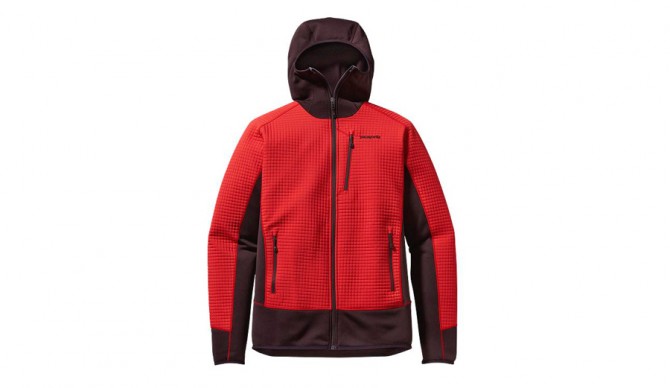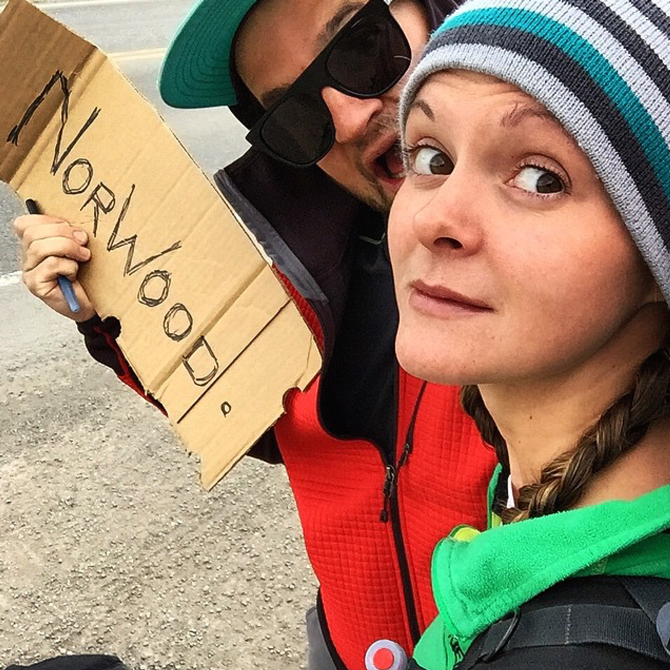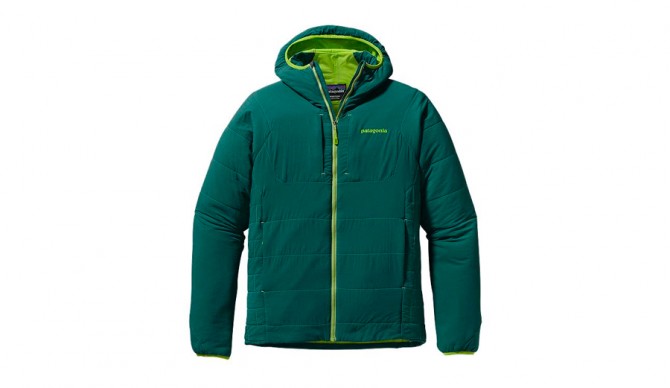
Photo: Patagonia
I am routinely baffled by the technologies being developed by some of the world’s most innovative companies. The winter sportswear industry is no exception. An arms race is on, driving towards greater comfort, better heat and water management, lower weights, and (what excites me the most) more versatile kits.
As any winter athlete would, I found my stoke level off the charts when The Inertia Deputy Editor Michael Woodsmall called me up with a simple question: “Are you free to go on a splitboarding trip to yet-to-be-released new product?” While a very difficult decision to make, in the end I adjusted my schedule and acquiesced*.
*Read about my experience in The Art of Skinning, a four-part series exploring the backcountry, the culmination for a lifetime of education in the mountains.
And it would be in Cooke City, Montana that I was introduced to the Backcountry Touring line by Patagonia.

Photo: John Robison IV
Although I was encouraged to test multiple setups, for me it eventually came down to versatility. I am no one-trick pony — one weekend you might find me high on the Continental Divide, scrambling on an exposed ridge, and the next I might be in the cockpit of a fully-reefed sailboat. I am also not made of money; if I am going to spring for a piece of Patagonia gear, I want to be sure it is the right one for the right activities, meaning the more versatile, the better.
Somehow, Patagonia did it. They have created a line of three pieces (plus one emergency garment) that I am confident would keep me warm and dry in any conditions on earth short of the Arctic or high Himalaya.
Let’s go from the inside out…

Photo: Patagonia
A few days before my flight up to Bozeman to meet the squad, a box arrived in the mail with an assortment of brand new Patagonia base, mid, and outer layers. Far more excited than any Christmas morning, I spent an hour fondling the new gear and poring over the accompanying documents explaining their intricacies. Merino and Capilene, sexy Gore-Tex, a backpack designed with the backcountry rider in mind. There was so much to see.
But once the dust settled and the dopamine was uptaken, one piece sat on top of the pile. It interested me most because it seemed the most innovative, a sort of hybrid outer/mid-layer — the Dual Aspect Hoody. Fast forward six months and this piece of kit has more than proven itself. I wear it all the time, for anything from slightly cool chill time to exertion in cold conditions. The “dual” element of the name refers to two distinct fabric types incorporated into the garment.
The hood, lower hem and underarms are made of the soft and stretchy PolarTec Power Dry, a highly breathable fabric that dumps heat and moisture from the body’s sweatiest zones. The rest of the hoody is made of Patagonia’s exclusive PolarTec Power Shield. Thoughtfully designed, this waffled fabric has astounded me by its durability and protection. It sheds precipitation like no mid-layer should and has calmly withstood the rock and tree abrasions inherent to mountain adventure without so much as a scuff.

Photo: John Robison IV
The Dual Aspect Hoody is an active layer; it would not stand up to a chilly night if the wearer weren’t generating heat from within. Also, the PolarTec Power Dry zones breathe both ways, which is to say that I found the wind cutting through quite easily on a crisp and breezy ridge run last week.
For the right pursuits — active in chilly but not cold conditions — the Dual Aspect Hoody breaks new ground in the best way. It is also an amazing piece to layer with, making it useful in the deep cold. It’s $249 price tag is well worth it if you’re looking for an active mid-layer that can stand up to some weather in more moderate conditions.

Photo: Patagonia
Patagonia introduced the Nano-Air Hoody last winter . I remember standing on Colorado Avenue in Telluride peering into the Patagonia store window and foaming at the mouth, gazing up at this new jacket. There was something about it, it just looked different. When I found out that I would be testing the next generation of Patagonia’s Backcountry Touring Line, my greatest hope would be that one of these hoodies would be included.
It was, and my expectations were blasted out of the water by its performance.
In the promotional materials surrounding the Nano-Air Hoody, the term “Put it on, leave it on” is used a number of times. Of course, I had my doubts — how could a garment work equally well during hearty exertion AND passive rest and recovery in icy winter conditions? Surely it’d be more like the famous Nano Puff Jackets, which I always threw on over everything when I stopped for a break on a frigid alpine assault but couldn’t wear once I got moving again. Well, they weren’t lying. The Nano-Air Hoody was designed to solve a major shortcoming of the down Nano Puff: breathability.
By its nature, the outer and inner fabric of the down Nano Puff jacket cannot breathe; if it did, feathers would creep out of the pores and the jacket would quickly lose its warmth and loft. And so down has been used for decades to keep people warm when they are passive. The moment heat starts being generated from within, a lack of breathability makes down untenable.
Enter the Nano-Air.
Patagonia developed the proprietary FullRange insulation to be warm (even when wet), breathable, stretchy, comfortable on the skin, and water repellent. And they nailed it. To this day, I get excited when I put the Nano-Air on — it always seems to cloak me in a swaddling warmth. With the hood up and my hands in my pockets, I can comfortably be outside on a windless 10-degree night. And unlike the Nano Puff down cousin, the Nano-Air serves the wearer well during exertions. Its breathability means that it dumps heat generated from within.

James Peak above Heart Lake, Roosevelt National Forest, Colorado. Photo: @beeofkings
I had a fear that the outer fabric would not be durable, that it would run or easily be damaged. This fear has proven unfounded; I even found that it weathered a fish hook wound without any visible problems during my amateurish attempt at fly-fishing last week above the East Portal near Rollinsville, Colorado.
As with the Dual Aspect, though, the Nano-Air Hoody’s breathability is a double-edged sword. In very cold conditions the garment will keep me warm… as long as there is no wind. The moment a chilly breeze springs up, though, I found that the cold air will cut quite easily through the FullRange fabric and chill me without a windproof layer.

Photo: Patagonia
The last piece to this layering puzzle comes in the form of a new GORE-TEX hard shell: the Refugitive. Don’t let the minimalism fool you: this jacket has kept me dry and warm in all types of precipitation and comfortable through a wild range of temperatures.
As a winter shell, the Refugitive does the job. Its three-layer GoreTex construction ensure that water will get out, but won’t get in. Big pit zips make for an easy heat dump during an ascent, but I also found the jacket holds heat really well if zipped and cinched. All of this was to be expected for a winter shell.
What really impressed me, though, was the Refugitive’s function in the summer. As the weather warmed I found myself grabbing the Refugitive every time — I knew it would keep me dry in a downpour and it packs down small and light. The new C-Knit fabric interior meant that the jacket was not clammy or sticky against my skin, making it much more comfortable to wear in the summer than other hard shells. And its 4-way stretch fabric means that the piece is comfortable during any activity.

Photo: Patagonia
Bonus Insurance: Patagonia Nano Puff Vest
When I’m gearing up for a cold expedition I almost always throw in my Nano Puff down vest as an ultra lightweight insurance layer. The vest keeps my core warm while my limbs shed heat if I’m working, plus when I stop it can be the difference between a chilly campfire and a comfortable one.

Photo: John Robison IV
I value versatility in my outdoor gear. Without the budget to get the most specialized garment for every activity, I need my stuff to serve many purposes. With the three jackets described here, I am confident that I could stay as warm and dry as possible.
If you’ve got $1000 to upgrade your kit this winter, this is how I’d spend it.

Photo: John Robison IV
For more on The Art of Skinning, read the four-part series exploring the backcountry, the culmination for a lifetime of education in the mountains:

